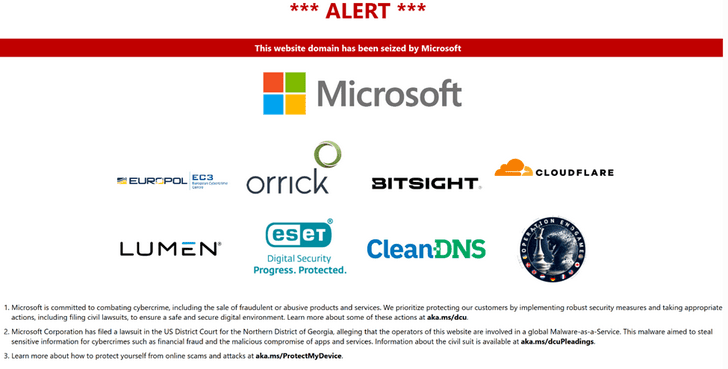Microsoft has announced a significant victory against cybercrime, successfully dismantling the infrastructure of the Lumma Stealer malware. This information-stealing malware has been a persistent threat, targeting sensitive data such as passwords, credit card information, and cryptocurrency wallet details. Through legal action and collaboration with law enforcement agencies, Microsoft has significantly weakened Lumma Stealer’s operations.
In a recent blog post, Microsoft detailed its efforts, revealing that a federal court in Georgia granted the company’s digital crimes unit the authority to take down, block, or suspend nearly 2,300 websites crucial to Lumma’s operation. This action, coupled with collaboration with international law enforcement, represents a major blow to the malware’s distribution and control mechanisms.
The US Department of Justice played a vital role, seizing Lumma’s central command structure. This disruption effectively crippled the marketplaces where the malware was being sold to other cybercriminals. Lumma Stealer has been circulating on underground forums since 2022, undergoing numerous upgrades to enhance its capabilities and evade detection. Its popularity among cybercriminals made it a significant threat to individuals and organizations alike.

Europol’s European Cybercrime Center and Japan’s Cybercrime Control Center also contributed to the effort by suspending locally based Lumma infrastructure. This international cooperation highlights the global nature of cybercrime and the importance of coordinated responses.
What is Lumma Stealer?
Lumma Stealer is a type of malware known as an information stealer. Its primary function is to extract sensitive data from infected computers without the user’s knowledge. This data can include:
- Passwords stored in browsers
- Credit card details
- Bank account information
- Cryptocurrency wallet keys
- Cookies and browsing history
This stolen information is then typically sold on the dark web or used directly by cybercriminals for malicious purposes, such as identity theft, financial fraud, or unauthorized access to online accounts.
Impact of Lumma Stealer
The impact of Lumma Stealer has been widespread. Microsoft reported identifying over 394,000 Windows computers infected by the malware between March 16 and May 16 alone. This highlights the scale of the threat and the potential damage it can inflict.
The Rise of Crypto Drainers and Malware
The fight against Lumma Stealer comes amid a broader increase in malicious cyber activity, particularly targeting the cryptocurrency space. Crypto drainers, software designed to steal the contents of crypto wallets, are becoming increasingly prevalent. These drainers are often distributed through phishing sites, malicious browser extensions, and fake airdrops, making it crucial for users to exercise caution when interacting with online crypto services.
Recent incidents, such as the distribution of Bitcoin-stealing malware within official printer drivers, demonstrate the evolving tactics of cybercriminals. These attacks are becoming more sophisticated, making it harder for individuals and organizations to protect themselves.
Protecting Yourself from Information-Stealing Malware
Given the prevalence of malware like Lumma Stealer, it’s essential to take proactive steps to protect your devices and data. Here are some key recommendations:
- Use strong, unique passwords: Avoid reusing passwords across multiple accounts. Consider using a password manager to generate and store complex passwords securely.
- Enable multi-factor authentication (MFA): Whenever possible, enable MFA on your online accounts. This adds an extra layer of security, requiring a second form of verification in addition to your password.
- Keep your software up to date: Regularly update your operating system, web browsers, and other software to patch security vulnerabilities.
- Be cautious of phishing attempts: Be wary of suspicious emails, links, and attachments. Never enter your login credentials or other sensitive information on websites you don’t trust.
- Use a reputable antivirus program: Install and maintain a reliable antivirus program to detect and remove malware.
- Backup your data: Regularly back up your important files to an external hard drive or cloud storage service. This will help you recover your data in case of a malware infection or other data loss event.
- Exercise caution when downloading software: Only download software from trusted sources. Avoid downloading cracked or pirated software, as it may contain malware.
Microsoft’s actions against Lumma Stealer demonstrate the ongoing efforts to combat cybercrime. By staying informed about the latest threats and taking proactive steps to protect your devices and data, you can significantly reduce your risk of becoming a victim of malware.